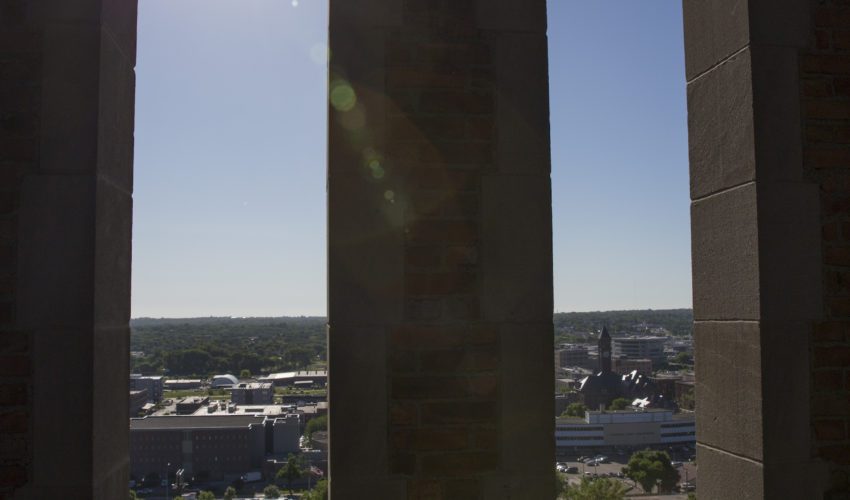Jodi’s Journal: The quiet threat of the ‘laptop class’
Sept. 4, 2023
There was a time in my life I probably would have preferred to work more from home.
But it wasn’t a long one.
Actually, it was the time when my work environment was the least engaging. I enjoyed my co-workers at Argus Leader Media, but my workspace consistently emptied as people left, reflective of the challenges with its business model that ultimately prompted me to start a business.
The low point was when I’d walk through the first floor on my way upstairs, and it was dark and vacant, with the chairs set on top of the desks. Given the chance to spend part of my day at home, likely making calls or writing, I’m sure I happily would have taken it.
But at all the other times in my career, I can’t imagine not going into an office. I loved the newsroom environment as a new reporter, and more importantly, I learned a lot from everyone who surrounded me. When I served in city government, I regularly met face-to-face with our team to talk through the various issues that arose. The impromptu conversations were equally valuable — the many times someone would stop in to give me a heads-up on something, chat about an idea or ask for a second opinion.
So I come at the topic of hybrid work both with the personal bias of someone who generally enjoys being “at work” and also as someone who regularly talks with business leaders about how they’ve navigated the movement toward offering a more hybrid work option.
Sioux Falls has found itself in an interesting position for the past few years, driven by our mix of businesses with national — even global — footprints and our companies where the top decision-maker is locally based. I’ve seen and heard it all — the offices where essentially everyone is in the building full time, the ones where nearly no one is, and the ones that are somewhere in between.
Last week, I got to connect with the new site leader for Citi in Sioux Falls, where the majority of its team works a schedule that requires three days in the office and allows for two outside of it.
That seems to be where much of corporate America is settling. A recent survey by McKinsey concluded being on-site roughly 50 percent of the time works better than an all-or-nothing approach. That could mean two to three days per week, or it could be one week in and one week out, or some other combination.
“We have found that teams see steep increases in development, connection, trust-based relationships and overall team performance when roughly 50 percent of their time is spent in-person, over the course of a project,” McKinsey’s chief people officer Katy George said in this interview.
“Our research shows that co-locating 50 percent of the time is the ‘hybrid sweet spot.’ When over 50 percent of time is spent in-person, we see trade-offs begin to emerge with individuals and teams having less flexibility and less time for focused work.”
I don’t question the analysis or the conclusion.
But I have started to wonder what the broader implications of it all might be.
Let’s consider as the most recent figures brought news that the Sioux Falls metro area leads the nation in low unemployment, what this dramatically changing work environment might mean in the next five to 10 years or beyond that.
Consider the new high school or college graduate determining a career. The people we need to become health care workers and construction workers and mechanics and welders and teachers and public safety workers and service industry workers and any number of other occupations that simply don’t allow a person to work from home.
This already is a decision point that requires someone to choose a more physically demanding job, but now we’re also going to contrast it with the ability to work from your basement or spare bedroom, entertainment or “break time” activity of your choice at hand, with a timesaving lack of commute.
Granted, there always are going to be people who thrive working outdoors, serving others directly and being around a team. But we’re not exactly enticing it by regularly offering hybrid work for the other percentage.
And, even bigger picture, might we not even risk creating a sort of societal divide? Going to work regularly versus working from home regularly are two extremely different lifestyles. I don’t think it’s outside the realm of possibility that very distinct views could result from it.
I did a little searching, figuring I’m likely not the only one who has thought of it, and it led me to none other than Elon Musk. The Tesla founder told CNBC he considered working from home “morally wrong.”
“There are some exceptions, but I kind of think the whole notion of work from home is a bit like the fake Marie Antoinette quote ‘Let them eat cake,'” he said. “You’re going to make people who make your food that gets delivered (that) can’t work from home; the people that come fix your house, they can’t work from home, but you can?”
“Does that seem morally right? That’s messed up,” Musk said in this interview
He has advocated a strict return-to-office policy.
“The laptop class is living in la-la land. As I said, look at the cars. Are people working from home here? Of course not,” Musk said.
In the coming weeks, I’m excited to show you a look inside the most cutting-edge new offices in Sioux Falls. They will be spaces intentionally designed to entice workers to want to be in the office and to be productive while they’re there.
But the biggest draw, in my opinion, has less to do with the look of the place and a lot more to do with the leaders. People want to be around others who bring value to them. Create a culture with empowering leaders who build engaged teams and it’s going to be easier to shift like-minded people back into the seats.







